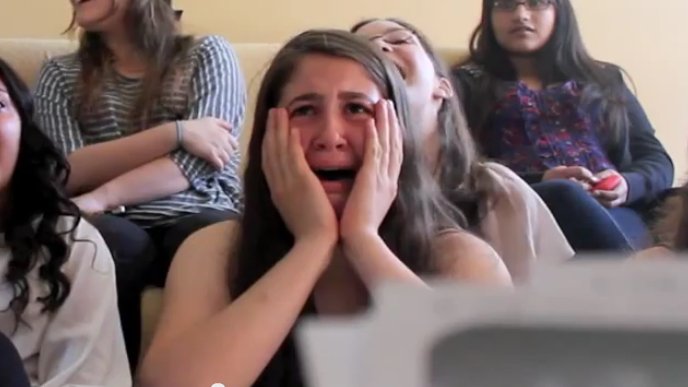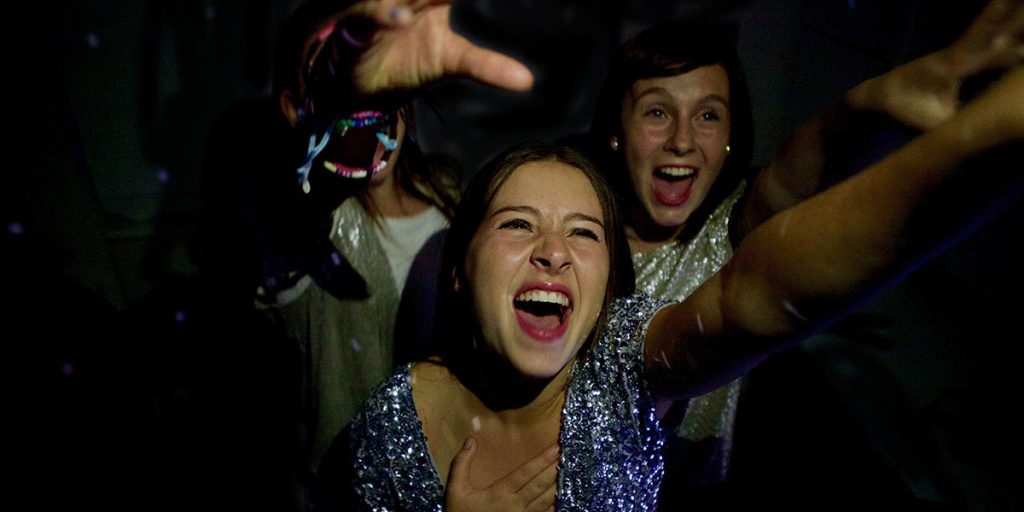I Used to Be Normal delves deeper into the world of boyband fandom and reflects on how identities and lives can be formed through a great love for musicians.
People always say that the things that formed them as a person are the experiences they had during their teenage years. Family and academics are high up on that list, but even higher are culture, arts, and music. If you think back to how you were as a teenager, I bet that the songs, the musicians, and the bands you used to listen to are still cherished in your adult life. For some people, their first loves were and will always be with certain musicians or band members. Director Jessica Leski’s (The Ball) documentary I Used to be Normal highlights people for whom their love of music has never stopped, and has shaped their life in the past and for years to come.
In I Used to Be Normal, we follow Elif from age 15 till 18, a child of Turkish immigrants who lives in Long Island and is infatuated with One Direction. During the film, we see her grow up from a boyband lover to an aspiring musician who is trying to follow her dream in a restricted conservative upbringing. We meet Sadia, in her twenties, who was, at 12 years old, the proud writer of a Backstreet Boys daily newsletter to her 12,000 online subscribers. The daughter of Pakistani immigrants is now still coming to terms with the extent of her love for the Backstreet Boys members but has managed to use her teenage experiences to become a professional writer.
Switching continents, we hear the story of 30-something Australian Dara, whose life was so altered by experiencing the music of Take That that, through band member Gary Barlow, she discovered her own sexuality. In her professional life, she is a band strategist with a high degree of boyband knowledge. Delving deeper into boyband fangirl territory, we lastly meet Susan, a 64-year-old whose heart still beats rapidly for her beloved Beatles. Which shows in her work, as she is a script reader for a film about women who have met through their love of the Beatles. Reminiscing yet looking ahead to the future, all four women through their individual stories share in their love for their boyband and how this has made them the people they are.

Identity, the core of I Used to Be Normal, is explored through thought-out interviews on various subjects in the protagonists’ teenage and adult years. It is refreshing to see a filmmaker not only analyse what lead to fandom behaviour, but to delve into the deep end and revel with the young and old fangirls into all aspects of fangirl life. Leski explores the underlying psychological and emotional needs that drive fangirls in a respectful and enthusiastic manner, while also providing a more academic and intriguing backdrop as to what makes a boyband through Dara’s interviews.
Though each of the protagonists’ stories are widely diverse, their shared subject also has the side effect of making each of their stories seem like different angles to the same story. This creates a dip in the documentary’s storyline as the various experiences are still being told through superficial questioning and an exploration of fangirl clipping. The historical aspect of boy band fangirling adds a nice touch to the narrative development, but it also leaves a lot of room for questions that remain unanswered. Many aspects that pertain to fandom, such as fanfiction, are mentioned but not further explored. On the other hand, this ensures the focus of the documentary remains on the women themselves, and not that what makes them a fangirl.
I Used to Be Normal is not just a film about and for fangirls, it is backed by fans as well. The documentary was funded partly through a Kickstarter campaign and was brought about with the intention to give a wider scope on the boy band fangirl phenomenon without any negative preconceptions or judgments. Fanboys and girls from all over the world backed the project to tell their story in a respectful and analytical way, and it shows. I Used to Be Normal shows the human individual of what is often perceived as hordes of highly emotional wild women. It shows that their passion has led to lifelong friends, acceptance and a positive outlook on life. The documentary highlights that music and musicians has gotten them through tough periods in life and has given them a direction for a professional career. It has to be said, there is nothing more liberating and empowering than cathartic screaming at the concert of your favourite band.
I Used To Be Normal: A Boyband Fangirl Story is now available to download and stream.

